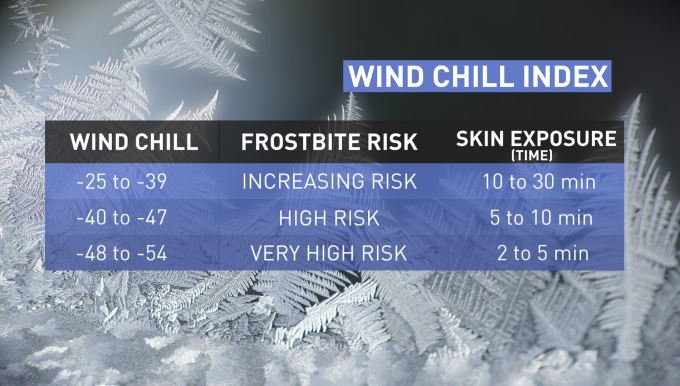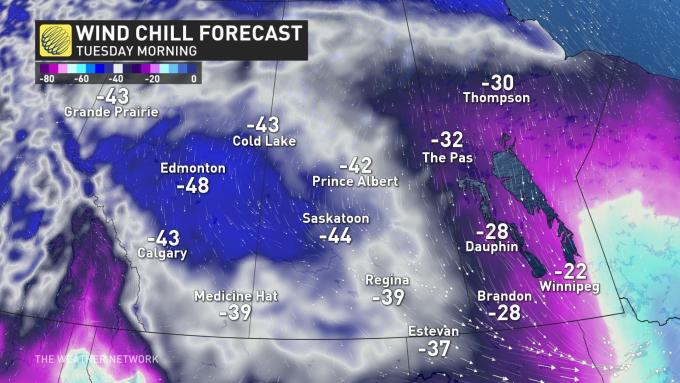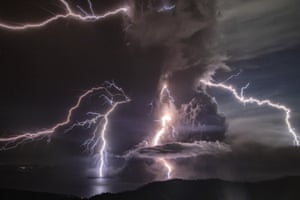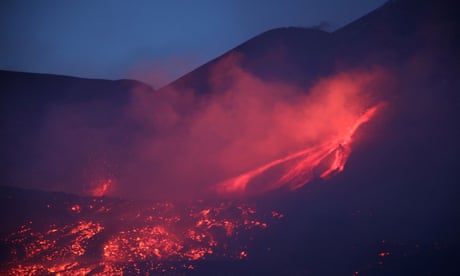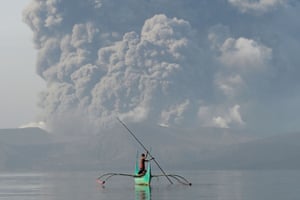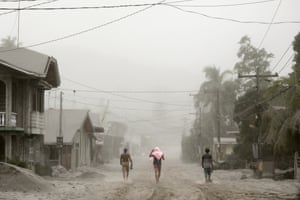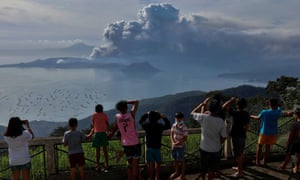WHITE POWER MILITIA'S LIKE RUBY RIDGE
Francis Wilkinson,Bloomberg•January 13, 2020
(Bloomberg Opinion) -- At first glance, the Second Amendment sanctuary movement currently burrowing into rural Virginia looks like a ballistic twist on the immigrant sanctuary cities movement. Both movements defy the law, one to protect undocumented immigrants from legally sanctioned deportation, the other to protect unlicensed firearms from legally sanctioned regulation.
But there is a significant difference, more political than legal. One sanctuary movement aims to protect a vulnerable population from personal harm. The other movement seeks to protect a group’s capacity to do harm — no matter how loud the outcry from a population vulnerable to gun violence.
Advocates for immigrant sanctuaries commonly invoke humanitarian, economic and public-safety arguments. Leaders of the guns-everywhere-for-anybody movement tend to dress up their concerns in the legal finery of the Second Amendment (minus the “well-regulated militia” part). Their argument, reduced to its essence, is two words: It’s unconstitutional.
Roughly 100 Virginia cities and counties have embraced some kind of sanctuary provision regarding guns. Other locales around the nation have as well. In the extremes of gun culture, commonplace proposals are treated as existential threats.
Virginia Governor Ralph Northam, a Democrat, now has a legislative majority in Richmond, and a host of gun proposals is in the works. They include background checks for all gun sales, bans on assault weapons, silencers and high-capacity magazines and a limit on gun purchases to one per month. (Michael Bloomberg, the founder of Bloomberg LP and a Democratic candidate for president, has voiced his support for the proposals.)
The National Rifle Association, which has its headquarters in Virginia, and other gun-rights groups are rallying to fight the proposals, sometimes with a curious inattention to detail. Last month Erich Pratt, senior vice president of Gun Owners of America, and Philip Van Cleave, president of the Virginia Citizens Defense League, released a 12-page letter to the people of Virginia. Over 12-single-spaced pages, they never quite get around to saying what those proposed regulations are — their broad outlines were debated in the campaign — or what makes them so awful. You will search the document in vain for the phrase “background check” or the word “silencer.”
You just have to take Pratt and Van Cleave at their word. And their word, which appears no fewer than 19 times, is “unconstitutional.” If any proposal “affects any law-abiding person,” Van Cleave told the Washington Post, “then we oppose it.”
One possible explanation for the pair’s reticence is that Pratt and Van Cleave have gotten a whiff of some polling data and it doesn’t smell good. A November survey of 901 registered Virginia voters found that 86% support making private gun sales and sales at gun shows subject to background checks, while 73% support a “red flag” law enabling family members or police to obtain a court order to remove guns temporarily from those deemed a threat to themselves or others. A majority of Virginians, 54%, even support a ban on the semi-automatic rifles frequently called “assault weapons.”
As it turns out, gun regulation is pretty popular in Virginia, as it is in many other states (at least 17 of which have some type of red flag law). That, more than anything, also explains the resort to Second Amendment sanctuaries.
“Looking at a map of Virginia,” Pratt and Van Cleave wrote, “it becomes clear that only a few, geographically small, yet heavily populated, jurisdictions have declined to stand up against the current threats to the Virginia and United States Constitutions.”
In other words, the “heavily populated” parts of Virginia do not have the same view of gun rights as the sparsely populated parts. And since the Virginia legislature was duly elected by popular vote, legislators will likely be more responsive to the interests of the majority than of the minority.
America is a representative democracy. But the gun lobby and other parts of the conservative coalition are increasingly skeptical of that. Armed with an all-purpose Constitution that means whatever they want it to mean, they seek to block popular government action.
The Second Amendment sanctuaries emerging in Virginia and elsewhere may mark a burgeoning conservative counterculture. Contempt for the “geographically small, yet heavily populated” regions where most Americans reside is becoming a conservative tic. It’s the impetus behind those triumphal MAGA maps depicting countless hectares of American forest, farm and pasture in bold Republican red, while little enclaves such as Brooklyn, with a higher population than 15 states, are dismissed with a tiny blotch of blue.
Densely populated America, in other words, is not real America, and opposing real America is by definition unconstitutional. What the gun sanctuary movement is seeking is not protection from government overreach, but from democracy.
To contact the author of this story: Francis Wilkinson at fwilkinson1@bloomberg.net
To contact the editor responsible for this story: Michael Newman at mnewman43@bloomberg.net
This column does not necessarily reflect the opinion of the editorial board or Bloomberg LP and its owners.
Francis Wilkinson writes editorials on politics and U.S. domestic policy for Bloomberg Opinion. He was executive editor of the Week. He was previously a writer for Rolling Stone, a communications consultant and a political media strategist.
For more articles like this, please visit us at bloomberg.com/opinion
©2020 Bloomberg L.P.
(Bloomberg Opinion) -- At first glance, the Second Amendment sanctuary movement currently burrowing into rural Virginia looks like a ballistic twist on the immigrant sanctuary cities movement. Both movements defy the law, one to protect undocumented immigrants from legally sanctioned deportation, the other to protect unlicensed firearms from legally sanctioned regulation.
But there is a significant difference, more political than legal. One sanctuary movement aims to protect a vulnerable population from personal harm. The other movement seeks to protect a group’s capacity to do harm — no matter how loud the outcry from a population vulnerable to gun violence.
Advocates for immigrant sanctuaries commonly invoke humanitarian, economic and public-safety arguments. Leaders of the guns-everywhere-for-anybody movement tend to dress up their concerns in the legal finery of the Second Amendment (minus the “well-regulated militia” part). Their argument, reduced to its essence, is two words: It’s unconstitutional.
Roughly 100 Virginia cities and counties have embraced some kind of sanctuary provision regarding guns. Other locales around the nation have as well. In the extremes of gun culture, commonplace proposals are treated as existential threats.
Virginia Governor Ralph Northam, a Democrat, now has a legislative majority in Richmond, and a host of gun proposals is in the works. They include background checks for all gun sales, bans on assault weapons, silencers and high-capacity magazines and a limit on gun purchases to one per month. (Michael Bloomberg, the founder of Bloomberg LP and a Democratic candidate for president, has voiced his support for the proposals.)
The National Rifle Association, which has its headquarters in Virginia, and other gun-rights groups are rallying to fight the proposals, sometimes with a curious inattention to detail. Last month Erich Pratt, senior vice president of Gun Owners of America, and Philip Van Cleave, president of the Virginia Citizens Defense League, released a 12-page letter to the people of Virginia. Over 12-single-spaced pages, they never quite get around to saying what those proposed regulations are — their broad outlines were debated in the campaign — or what makes them so awful. You will search the document in vain for the phrase “background check” or the word “silencer.”
You just have to take Pratt and Van Cleave at their word. And their word, which appears no fewer than 19 times, is “unconstitutional.” If any proposal “affects any law-abiding person,” Van Cleave told the Washington Post, “then we oppose it.”
One possible explanation for the pair’s reticence is that Pratt and Van Cleave have gotten a whiff of some polling data and it doesn’t smell good. A November survey of 901 registered Virginia voters found that 86% support making private gun sales and sales at gun shows subject to background checks, while 73% support a “red flag” law enabling family members or police to obtain a court order to remove guns temporarily from those deemed a threat to themselves or others. A majority of Virginians, 54%, even support a ban on the semi-automatic rifles frequently called “assault weapons.”
As it turns out, gun regulation is pretty popular in Virginia, as it is in many other states (at least 17 of which have some type of red flag law). That, more than anything, also explains the resort to Second Amendment sanctuaries.
“Looking at a map of Virginia,” Pratt and Van Cleave wrote, “it becomes clear that only a few, geographically small, yet heavily populated, jurisdictions have declined to stand up against the current threats to the Virginia and United States Constitutions.”
In other words, the “heavily populated” parts of Virginia do not have the same view of gun rights as the sparsely populated parts. And since the Virginia legislature was duly elected by popular vote, legislators will likely be more responsive to the interests of the majority than of the minority.
America is a representative democracy. But the gun lobby and other parts of the conservative coalition are increasingly skeptical of that. Armed with an all-purpose Constitution that means whatever they want it to mean, they seek to block popular government action.
The Second Amendment sanctuaries emerging in Virginia and elsewhere may mark a burgeoning conservative counterculture. Contempt for the “geographically small, yet heavily populated” regions where most Americans reside is becoming a conservative tic. It’s the impetus behind those triumphal MAGA maps depicting countless hectares of American forest, farm and pasture in bold Republican red, while little enclaves such as Brooklyn, with a higher population than 15 states, are dismissed with a tiny blotch of blue.
Densely populated America, in other words, is not real America, and opposing real America is by definition unconstitutional. What the gun sanctuary movement is seeking is not protection from government overreach, but from democracy.
To contact the author of this story: Francis Wilkinson at fwilkinson1@bloomberg.net
To contact the editor responsible for this story: Michael Newman at mnewman43@bloomberg.net
This column does not necessarily reflect the opinion of the editorial board or Bloomberg LP and its owners.
Francis Wilkinson writes editorials on politics and U.S. domestic policy for Bloomberg Opinion. He was executive editor of the Week. He was previously a writer for Rolling Stone, a communications consultant and a political media strategist.
For more articles like this, please visit us at bloomberg.com/opinion
©2020 Bloomberg L.P.

















